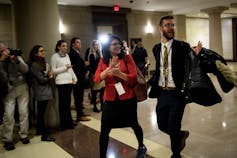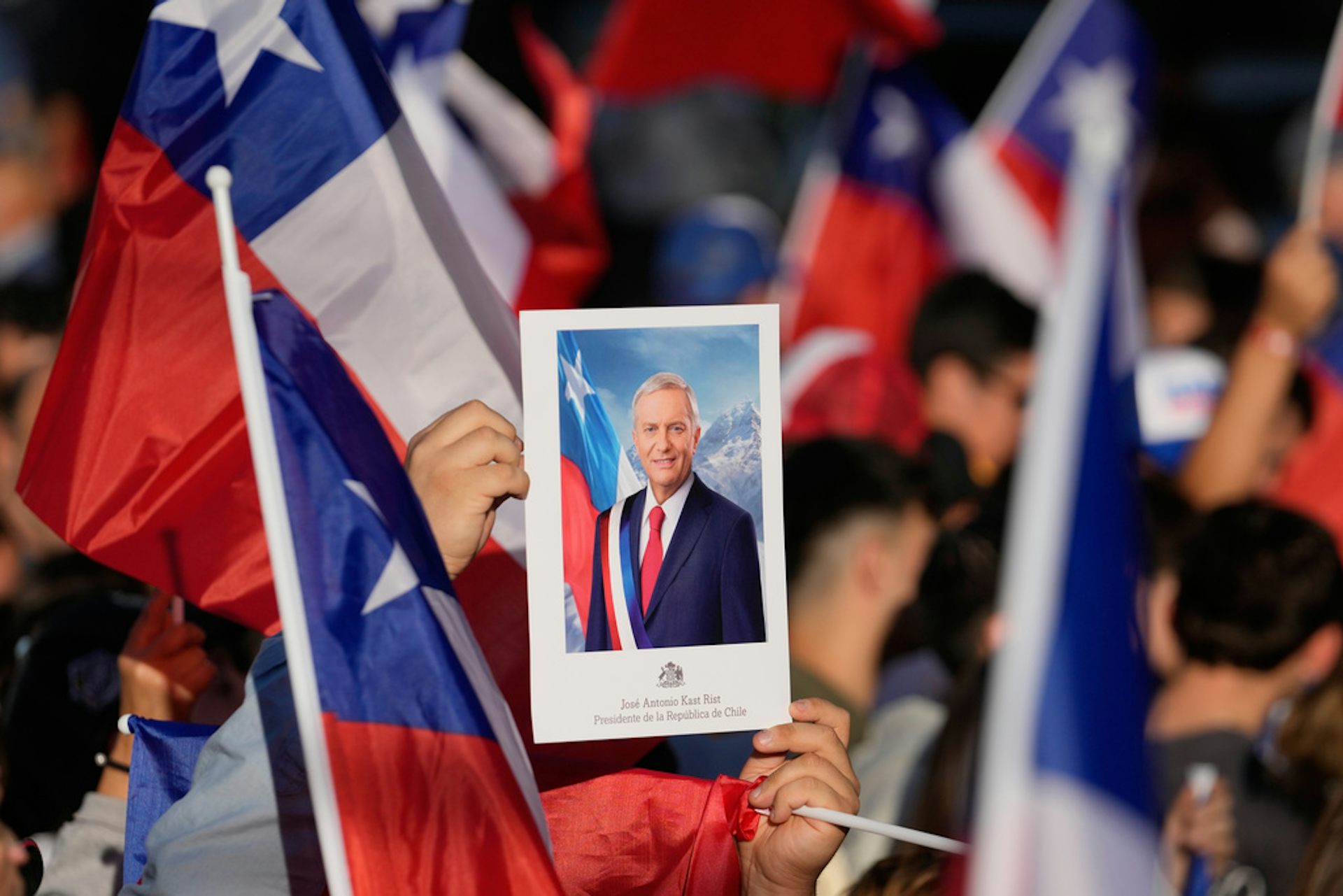A brief history of Dearborn, Michigan – the first Arab-American majority city in the US
The city often becomes a magnet for anti-Arab sentiment during election years and global conflicts; however, the more interesting story is what happens in the city when the spotlight is turned off.
Dearborn, Michigan, is a center of Arab American cultural, economic, and political life. It’s home to several of the country’s oldest and most influential mosques, the Arab American National Museum, dozens of now-iconic Arab bakeries and restaurants, and a vibrant and essential mix of Arab American service and cultural organizations.
The city became the first Arab-majority city in the U.S. in 2023, with roughly 55% of the city’s 110,000 residents claiming Middle Eastern or North African ancestry on the 2023 census.
One of us is an author and historian who specializes in the Arab and Muslim communities of Detroit, and the other is a criminologist born and raised in Dearborn who conducts research on the experiences and perceptions of Arab Americans. We have paid close attention to the city’s demographic shifts.
To understand Dearborn today, we must start with the city’s past.
Ford and Dearborn are in many ways synonymous
Dearborn owes much of its growth to automotive pioneer Henry Ford, who began building his famous River Rouge Complex in 1917. Migrants from the American South alongside immigrants from European and Arab countries settled Dearborn’s Southend neighborhood to work in the auto plant.
While most early 20th-century Arab immigrants to the United States were Christians, those who moved to Dearborn in the 1920s were mainly Muslims from southern Lebanon.
Life downwind of the world’s largest industrial complex proved challenging. But the real threat this diverse population faced in the 1950s through the 1970s was from a city-led rezoning campaign designed to turn the Southend over to heavy industry.
Most of the white ethnic groups in the neighborhood had churches and business districts scattered around Detroit, which facilitated their departure from the Southend. But for Arab American Muslims, this community, with its mosques and markets, was indispensable as they began to welcome distant kin from the Middle East after U.S. immigration laws relaxed in the 1960s.
Fleeing civil war in Yemen and the Israeli occupation of the Palestinian territories in 1967, these new Arab immigrants breathed new life into Dearborn. In 1973, they filed a class-action lawsuit against the city that eventually saved their neighborhood.
When the Lebanese civil war broke out in 1975, the Southend again welcomed a new generation of refugees and migrants. By the 1980s, this mix of first- and second-generation Arab Americans had begun to spill into other neighborhoods in East Dearborn. New mosques began opening in the 1980s, and Arab entrepreneurs began investing in neglected commercial corridors.
But Arab Americans frequently faced discrimination in the housing market and in the public schools, which struggled to address the needs of a large cohort of English language learners.
Overcoming discrimination
Tensions came to a head in 1985, when Michael Guido won a mayoral race in which the “Arab problem” as his campaign literature described it, pitched the interests of the white working class against new Arab migrants.
Arab American activists responded by pushing for more city services in East Dearborn and running for office. Republican Suzanne Sareini was the first Arab American elected to the City Council in 1990.
But with at-large elections, those with more Arab-sounding names were at a disadvantage. It took another 20 years, when Arabs became the plurality of the population, before other Arab Americans joined Sareini on the council.
Following the al-Qaeda attacks of 9/11, Dearborn became a target for anti-Arab racism and Islamophobia, government surveillance, and harassment. The city became a fixation of national media seeking to make sense of its growing Muslim American minority.
Anti-Muslim activists regularly staged Quran-burnings, paraded around ethnic festivals with the heads of pigs on spikes, and threatened to bomb local mosques.
Nevertheless, the Arab American community continued to grow and diversify. Iraqi and Syrian refugee populations began to arrive in the 1990s and 2010s, respectively, following wars in their homelands. They settled in Dearborn and on its periphery in Detroit and neighboring suburbs.
Together, this new cohort of Arab Americans joined the established community in fighting back against president Donald Trump’s Muslim travel ban and other policies that discriminated against refugees, migrants and Muslims by building alliances with Democrats and engaging the broadening civil rights coalition, represented by groups such as Black Lives Matter and the Women’s March.
Rep. Rashida Tlaib’s landmark election to the U.S. House of Representatives in 2018 as the first Palestinian American woman and one of the first two Muslim American women reflects this growing progressive political base for Arab Americans. Her district includes Dearborn and parts of Detroit and other suburbs.

New leadership
Reflecting the increasing demographic and political clout of the Arab population in Dearborn, Abdullah Hammoud became the city’s first Arab American elected mayor in 2021.
Hammoud’s priorities have included creating the city’s first Department of Public Health, introducing Narcan vending machines to address the opioid crisis, fighting for clean air in the Southend, and hosting Ramadan festivities and an Eid al-Fitr breakfast. He’s also shown outspoken support for the LGBTQ+ community.
Hammoud objected publicly to the congressional censure of Tlaib in 2023 following her remarks about the violence in the Gaza Strip. He also called for an unequivocal cease-fire in Gaza at a time when other Democratic leaders were silent.
Dearborn often becomes a topic of global media interest during election years or at times of conflict in the Middle East. That has certainly been true during the ongoing attacks on the Gaza Strip.
The Wall Street Journal recently published an editorial labeling the city as America’s “jihad capital,” which led to public threats against the city that forced Hammoud to increase police patrols.
Public officials, from local leaders to President Joe Biden, have rallied around the city and asked the paper to rescind the editorial and to apologize.
So far, it has not.
The more interesting story about Dearborn, however, is what happens when the national spotlight is turned off. Then, as we have witnessed decade after decade, the city’s residents, Arab and non-Arab, new and old, work to make their home a better, safer, healthier place to raise their families and their voices.
Nothing to disclose.
Amny Shuraydi does not work for, consult, own shares in or receive funding from any company or organization that would benefit from this article, and has disclosed no relevant affiliations beyond their academic appointment.
Read These Next
Chile elects most right-wing leader since Pinochet – in line with regional drift, domestic tendency
José Antonio Kast, who has run for the presidency several times, successfully seized on widespread…
Epstein’s victims deserve more attention than his ‘client list’
Powerful men connected to Jeffrey Epstein are named, dissected and speculated about. The survivors,…
The ‘one chatbot per child’ model for AI in classrooms conflicts with what research shows: Learning
AI tutors are often held up as an ideal, but prioritizing individualized teaching can detract from the…






